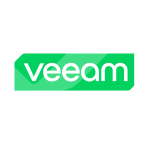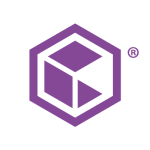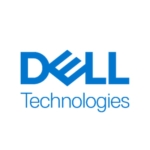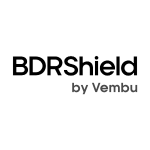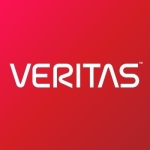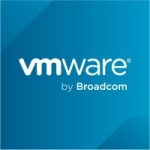What is our primary use case?
Our primary use case is to back everything up. Rubrik backs up all of our servers on a schedule that takes the bulk of every bit of the mundane tasks out of our hands. It automates everything and frees us up to be able to look at issues where something may not have backed up correctly. We can then investigate those servers to see if they need to be updated or if there's a problem.
A lot of times, admin will drop new servers out without telling anybody. We have SLA domains set up in order to catch those so that we're not completely caught off guard by them. We can put them in the proper SLA for the correct backup schedule and proper retention if it needs to be replicated automatically right away and from one site to the other. From there, if it needs to be kept longer, it'll go up to the cloud for cold storage.
How has it helped my organization?
When it comes to saving time managing our backups, Rubrik has saved us a lot of time compared to what we were using. It feels like it has saved us lifetimes of time because the process used to be difficult. It's not just the day to time savings. When something goes wrong, that's where the real time savings comes into play. We are able to get back to where we need to be more confidently and with much fewer steps.
As far as the day-to-day stuff goes, I don't know if there is a way to put an actual value on that other than things are not nearly as hectic on the day-to-day, stressing over whether or not the backups ran because, with Rubrik, we already know they ran.
In terms of reducing our recovery time, it has saved us hours. For a recovery event, it used to take hours into days and now it's less than an hour, it takes minutes. It's really impressive. Rubrik makes the job much easier. It's very intuitive, where everything used to be very complicated. You can almost have better job security because of how complicated it was. Whereas now, the setup of the whole system takes no time. There's a lot of day-to-day time savings that allows us to get freed up to do other things, but also to make sure that what we do have is working optimally. Before, there was a lot of stuff that would fall through the cracks that we wouldn't really know about until something went wrong.
Rubrik affects my team's productivity. I'm not even the main backup specialist on our team, but it freed up enough time for our backup specialists to show me how to do everything. It's ridiculously easy. It's simple enough for me to be able to do it where it's not my top priority task throughout the day. When something happens and someone needs a recovery, I'm able to go in and do it, even though I haven't done it in a week or so. Before, there wouldn't have been the time to show anyone else or take the time to actually learn to be able to instruct someone else on how to do it effectively and correctly.
It provides a lot of time for education and deep-diving into figuring out why certain things didn't work and then correcting those issues.
We protect virtual environments. It's all VMware, SQL database, and a few Oracle. There are some physical machines as well that require backup agents.
What is most valuable?
The recovery is the most valuable feature. The interface is very clean, streamlined, and simple to actually perform a recovery. It's four clicks away from being done, depending on what you want to do. That's on something that is already automated on top of that. All of the backups are already automated, so when something comes up and someone's requesting a backup or recovery of a server for whatever reason, it takes very little time to get in, find what you're looking for, and get it done. It's not a drawn-out process.
The web interface is very intuitive. I compare it to an iPhone. Everything is where you expect it to be. The main tabs are very well laid out. The drop-downs inside of those tabs make sense. It's very easy to use and it makes sense. It's not the traumatic experience of older products.
The learning curve is incredibly short. The beautiful part about it is that it makes sense so that you don't have to use it every single day to be able to go back in and do what you want to do. There's a lot to be said for that.
I use Rubrik daily to ensure that everything backed up as expected. I look to see what may or may not have backed up and why. I do that aspect now a lot more. I do backups periodically when the main contact is not available.
We use SLA-based policy automation. It solidified our data protection operations. That alone gave us the ability to simplify and streamline the process. We were able to come down with independent SLAs that met the specific needs for whatever department or server was being protected. Whether it's production, DevTest, utility servers, whatever the case is, there are individual SLAs that we're able to make simple changes at the wholesale level, if we need to. Once they're set up, they're good to go. It makes things very easy and we can set up a bunch of them which makes life tremendously easier.
In terms of the archival functionality, we pushed things off to S3 and it works. At that point, when you're bringing things back from archival, that can be a little slow, but that's a matter of things outside of Rubrik's control. It depends on what it is, where it's at, how old it is, and what it is you're paying for.
Predictive Search to find servers makes life so much easier. We're able to drill down and put it in a simple part of whatever server name it is. A lot of times people need the server restored. We check the server name and they give us some name that's not exactly the technical server name. We're able to fish down and find what we're looking for much quicker than trying to rely on them to give us the proper name. The Predictive Search definitely helps everywhere.
What needs improvement?
Our main Rubrik guy has used the API. I continually hear that it needs better documentation. I can't even get the API to work right but that's mainly on me.
If there was something that we could get Rubrik to fix, it would be when our DBS takes snapshots of a server or the database, the replication doesn't kick off fast enough. They can't remote it to the peer site and manipulate it back up in order to move it over, take a copy of production, slap it over, and test it out. As I understand, they are working on it. Replication works. We also get spoiled by how good things are now. We get to a point where it is so easy but when something isn't instant gratification, it seems that everything else is so amazing, why isn't this right?
They're doing everything I need it to do. When everything works so well, and it's so fast, and then you stumble upon something that's not the speed of light, it's confusing.
Buyer's Guide
Rubrik
December 2025
Learn what your peers think about Rubrik. Get advice and tips from experienced pros sharing their opinions. Updated: December 2025.
879,259 professionals have used our research since 2012.
For how long have I used the solution?
I've been using Rubrik for five years.
We use both SaaS and physical appliances because we have Edge devices that are considered physical, but for the most part, the majority of everything we do is SaaS.
What do I think about the stability of the solution?
It's always on. It is available all the time.
What do I think about the scalability of the solution?
Scalability is not an issue.
How are customer service and support?
Technical support is pretty good. You can reach out to a support agent and have someone talking to you that you can actually work with after 15 minutes. Opening tickets online is decent.
If you give them a sad face on a review, someone will reach out and ask what happened and what they can do better. They're definitely all about customer service and customer support.
How was the initial setup?
The installation was pretty simple.
The deployment strategy was four nodes on each side of each location and we have two locations. We did a POC and it was set up in no time. It was ridiculously fast and simple. Now, we're up to 16 nodes in each location.
There's not much to it. It's not a 28 step process. There's a little bit to it but it's plug-and-play, as much as a solution could be.
What other advice do I have?
My advice would be to do a proof of concept. You won't be sorry. Play with it. We came from other products that were nowhere near as capable or user-friendly as Rubrik, so when we got in, it was a night and day difference that Rubrik was so easy.
Rubrik is so much better. We're always looking at other avenues and options because other companies will always ask us to show us their product but there's nothing out there that has made us even consider switching. There's a lot to be said for competence.
I would rate Rubrik a ten out of ten.
Disclosure: PeerSpot contacted the reviewer to collect the review and to validate authenticity. The reviewer was referred by the vendor, but the review is not subject to editing or approval by the vendor.




